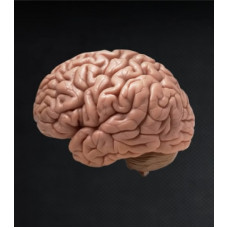The Latin is encephalon, the ancient Greek is ἐγκέφαλος.
The cerebrum is the forebrain of the central nervous system consisting of 5 main divisions: forebrain, intermediate brain, midbrain, cerebellum and medulla oblongata.
It regulates vital functions of the body (smell, touch, statoacoustics, coordination of movement, etc.) The development of brain areas in fish is influenced by the lifestyle of aquatic inhabitants and environmental conditions.
Pelagic species with excellent movement skills in water have a well developed cerebellum.
The brain structure of fish is such that representatives with a developed sense of smell are distinguished by the increased size of the forebrain, sedentary representatives have an elongated shape.
The brain of fish is primitive, linear and very small. Thus, the burbot brain is 1/700 of body weight, the pike - 1/1300 and the shark only - 1/37000. The weight of the brain as a percentage of body weight is 0.06-0.44% for modern cartilaginous fish, 0.02-0.94% for bony fish, 0.29-0.36% for caudal amphibians, and 0.50-0.73% for tailless fish[2]. In mammals, the relative size of the brain is much larger: in large cetaceans 0.3 %; in small cetaceans 1.7 %.
The brain has taken over the function of overall coordination of fish behavior. Fish swim by obeying rhythmic commands of the brain, which are transmitted through the spinal cord to the fins and tail.
Brain
Tags: brain

